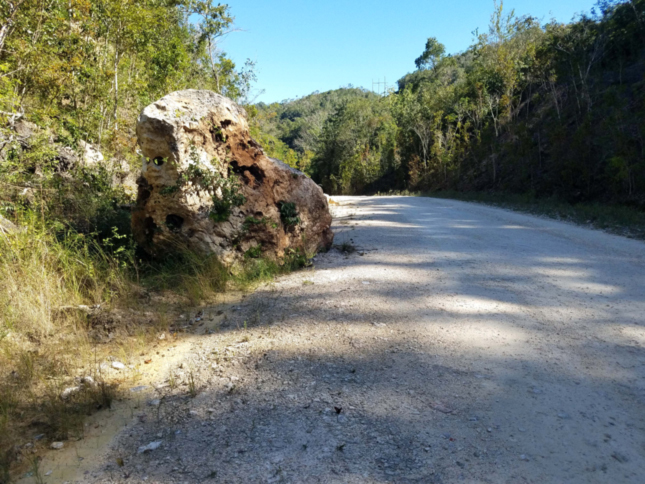
Hydro Road is a major component of living at Better in Belize. You will experience that road at least twice every time you come to BIB – coming and going – and if you are here for any length of time you will travel it many times, probably with some degree of loathing, because Hydro Road eats vehicles.
Poorly maintained, its 10½ miles are studded with gullies, potholes, rocks and boulders that throw vehicles from side to side, up and down, and cross-ways. It damages moving parts, and creates moving parts out of solid parts. It chews up tires and breaks axles. In the dry season it covers the outside and fills the inside of your vehicle with white dust.
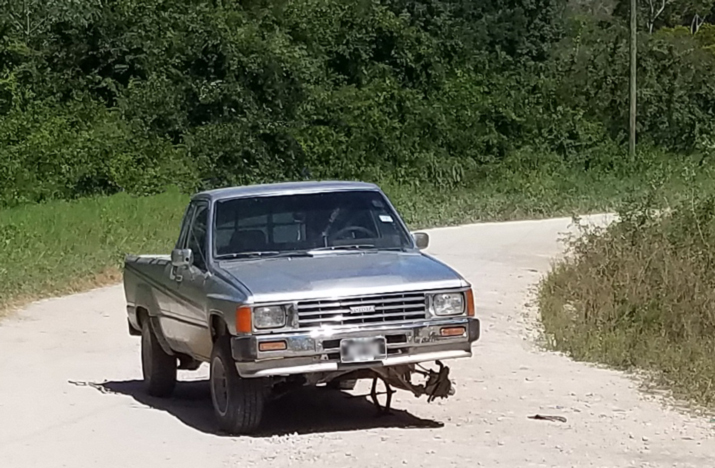
In the wet season, its mud covers the outside and gets tracked inside your vehicle. The road’s slick surface may require 4WD when pools the length of futbol fields appear. The water may be shallow and easily crossed, or deep – with your vehicle up to is axles in a hidden hole or high-centered on an uncharted boulder. If you live here long enough, all of these things will happen to you.
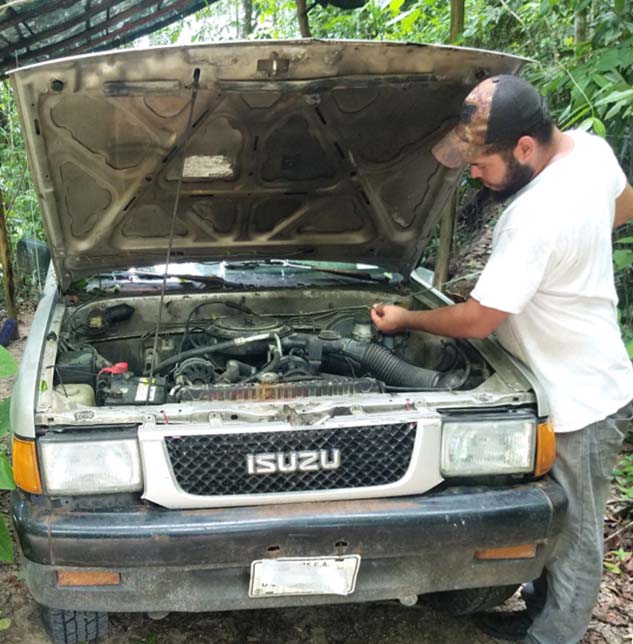
For some people, Hydro Road is a deal breaker for living at BIB. They just can’t deal with driving back and forth on it regularly. That’s understandable. It takes a certain mind-set to face that drive with acceptance. However, with some planning and determination, an “accepting perspective” can be achieved and the trip can become barely noticeable. Really! So here’s a guide for traveling Hydro Road with minimal angst.
1. Accept the fact that Hydro Road will eat your vehicle.
It will. There’s not one thing you can do about it, except to drive slowly, watch the road carefully, and don’t grip the steering wheel too hard (see #7). So stay positive. If you curse the road, or keep exclaiming about how bad it is, it will seem that much worse. But if you say, either out loud or internally, “Of course the road is bad. I know that. So what?” then you are well on your way to acceptance.
2. Be proactive.
Before you leave home, store a flashlight, some ibuprofen, a jug of water and an energy bar in your vehicle in case of trouble. Now, make sure your registration and insurance stickers are up to date. Confirm that you have money, driver’s license and passport. Do you have your phone? A charger plugged into the cigarette lighter is a smart move.
Before getting in the vehicle, check your tires, oil level, and other items that might experience problems. Jiggle, poke and shake parts of your vehicle to check whether or not they’re still tightly connected. Nuts loosen quickly on Hydro Road, and you can lose a bumper or some other part if you don’t pay attention.
Check the air in your spare tire, and make sure your jack and tire wrench are in the vehicle.

Insurance/ Registration 
Check tires 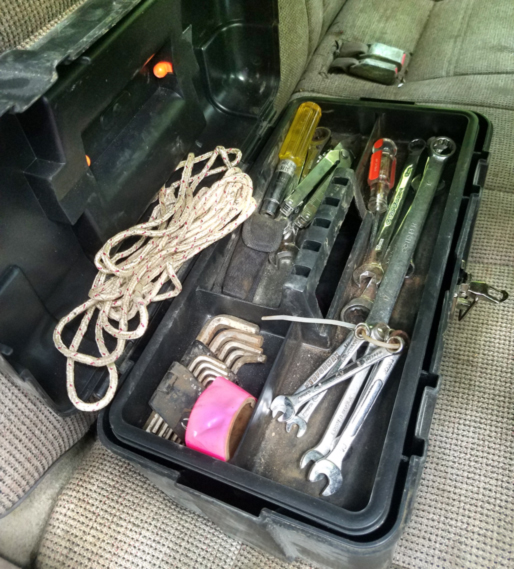
Tool kit
Carry along a tool kit with basic tools in it, just in case you have a breakdown. Even if you don’t know how to use them, someone who does might come along to help you. Tuck some extra fuses in it.
[Viewers recommend: also having a tow strap, and soft, finger-bendable wire to reattach loose things. A paperback might be welcomed if you get bored.]
3. Plan to drive slowly.
Leave yourself plenty of time to get where you need to go. The worst parts of Hydro Road can require speeds down to 5mph. Drive the rest of the road slowly enough that if you hit a bad spot it won’t damage your vehicle – around 20mph is advisable.
Potholes and gullies are least visible at noon when there are fewest shadows, so plan trips for as early in the morning or as late in the afternoon as possible.
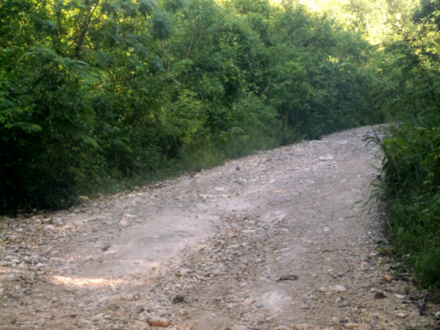
Hydro Road 8am 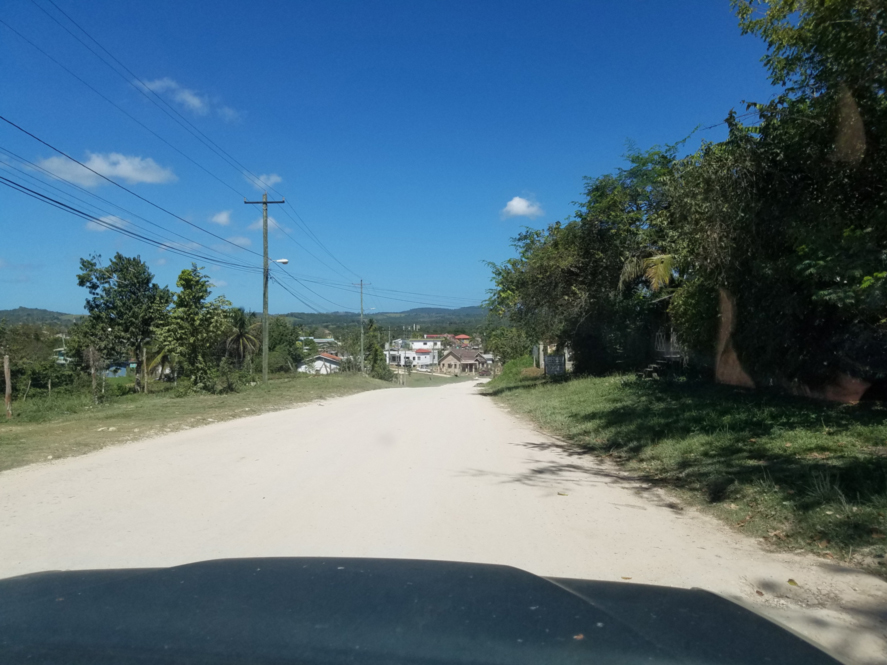
at Noon
4. Use 4WD sparingly.
Don’t wear out your 4WD components by driving all the way to town with it engaged. Most experienced drivers don’t use their 4WD on Hydro Road except for a handful of times per year to get through the deepest puddles or go up or down the steepest rocky sections.
5. Watch for traffic.
Seeking the smoothest parts of the road will cause you to drive on the wrong side of the road at times, so watch carefully for pedestrians, bicyclists and motorcycles. Driving on the wrong side of the road is one of the most frequent causes of accidents on Hydro Road, so return to the right side when approaching a blind curve.
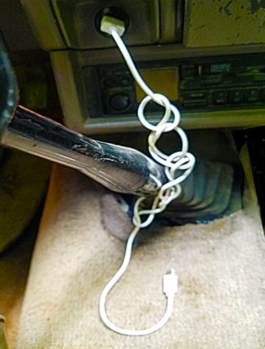
6. Distract yourself (without driving dangerously, of course!).
For instance, make a Spanish/English word list to practice. The more you concentrate on that, the less you’ll think about the bad road. Take a quick glance at the list, then recall as many words as possible without looking again until you get them all perfect (while still carefully watching the road). This will help you get to town and back without losing your cool. It also makes the trip seem shorter. You could also listen to music or the radio. Or maybe there is something else you want to learn – lyrics to a song, maybe, or an epic poem. Or you can try “Road Yoga” – “Omm-bump-mmm-thump-mmm-crunch-mmm……”
7. Don’t strangle the steering wheel.
Just as when riding a horse, steer your vehicle in the general direction, but let your vehicle figure out where to put its wheels. A loose grip, with the steering wheel sliding back and forth through your hands will make the ride easier on both you and the vehicle. Practice it.
8. Reduce the frequency of trips.
To reduce trip frequency, make shopping lists of items you need. Or ask someone going to town to pick up one or two items on your list. A trip to Benque from BIB costs an average of $20bz for gas and repairs for most vehicles. If you go with someone else, share the cost of the trip.
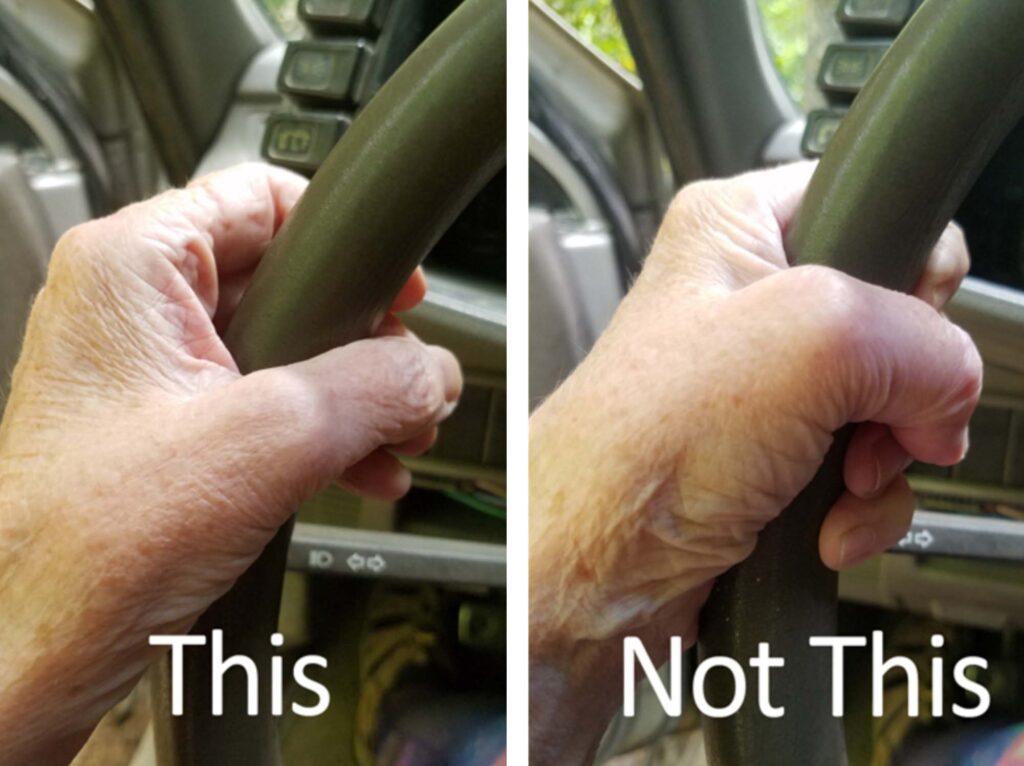
9. Older vehicles have advantages
Local mechanics may not have the equipment to repair newer models, and repairs can take forever if parts aren’t available locally. Ordering parts can cost a fortune when you add shipping and import duties. Most modern vehicles are designed for pavement, and electrical systems fare badly on rocky roads.
Many locals drive Toyotas or Isuzus from the 90s or early 2000s because they are durable and repair parts are easily located. Pay attention. All vehicles require frequent servicing due to the thumping they get on Belize’s roads, but getting an old vehicle repaired is faster, cheaper and more sensible than buying a new vehicle. Additionally, an old vehicle is less likely to be a target for thieves. Ask your mechanic to locate a good one for you.
10. Listen to your vehicle. Try to notice new sounds as soon as they start – they mean that something is loose, malfunctioning, or about to fall off or break. Get to a mechanic as soon as possible.
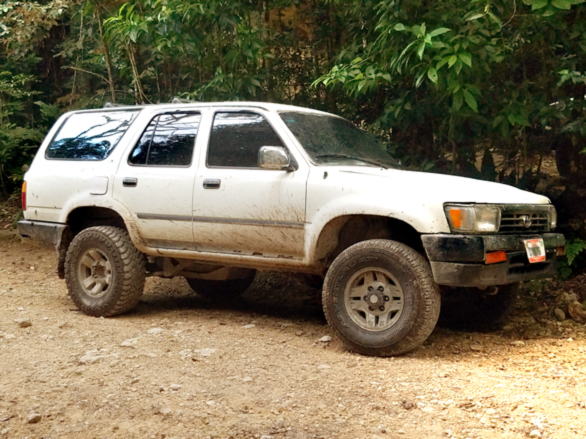
11. Develop a good relationship with your mechanic. Ask around until you find a mechanic you trust, and treat him well if he can keep your vehicle running. Still, even the best mechanic can’t keep your vehicle, old or new, from experiencing mechanical problems. Hydro Road is hungry, and eats nuts and bolts for breakfast, tires and CV joints for lunch, axles with a side of muffler for dinner, and everything else for snacks. If you’re wise, you’ll do your best to avoid feeding it.
12. Hire a driver.
If you’re getting along in years or aren’t in the best of health, or if you’d just like a break, you can hire someone else drive Hydro Road for you. Even if you have come to terms with the road, it can still be exhausting to the body. If you can afford it, there are reliable Belizean drivers in our Waterhole community who are willing to be your driver for the day (using your vehicle) while you save your energy for shopping. They can also go to town for you to fetch something. Renie Brady drove Hydro Road for six years, but now uses a driver and can recommend reliable drivers if asked.
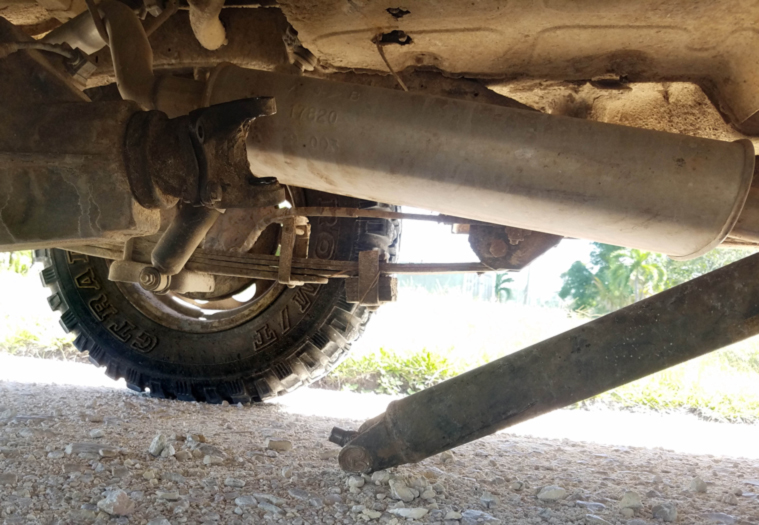
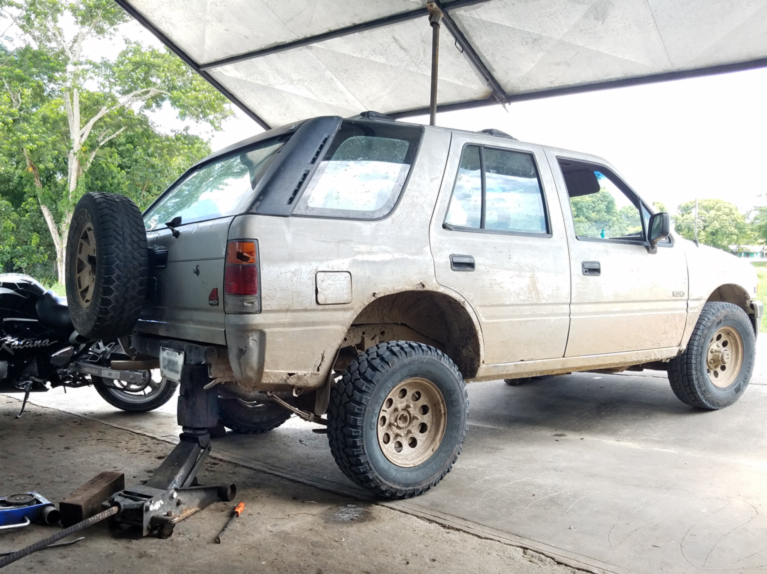
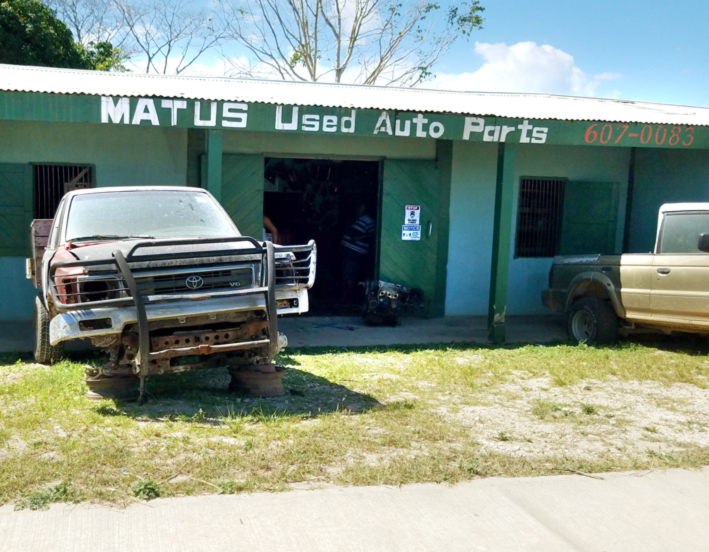
Excellent tips for keeping safe and sane in the difficult situation…I ‘d be learning song lyrics in Spanish!
Great write up.
I’d personally suggest PRE 90’s (or early 90’s) vehicles if possible. And few to no “power” options: windows, locks, etc., exception being power steering…it’s a godsend on this road.
Additionally, if you’re confident/experienced consider having a chain saw in the trunk. Never know when a tree may come down that prohibits passage. A tire patch kit and bicycle pump is also a good idea, flat tires are a notorious regularity in Belize. I’ve heard stories of 5 flats in one day. ONE DAY! I personally travel/ed w. a chainsaw, 2 spares, tire repair kits and a farm jack in my ’86 4×4 when driving around in Cayo (mostly to and from BiB/Cayo). Thankfully I didn’t really need them but…one never knows.
Cheers.